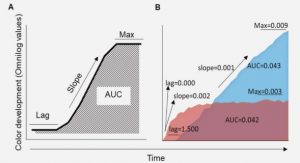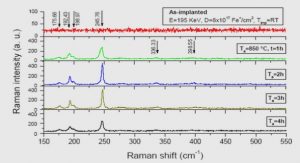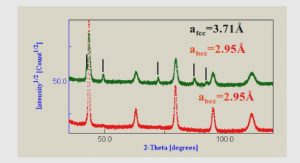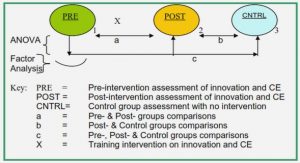Get Complete Project Material File(s) Now! »
Plant material and controlled O3 exposure
Young trees from a hybrid Populus tremula x alba clone (INRAE 717-1b4) were cultivated similarly to Cabane et al. (2004). Prior to the experimental exposure, micropropagated cuttings were grown for two weeks in 0.5 L pots containing compost (Gramoflor Universel) and perlite [1:1, (v/v)], and placed in containers covered with transparent acrylic hoods inside a growth chamber. The environmental conditions were set at 22°C/18°C day/night temperature, 350 μmol m-2 s-1 photosynthetic active radiation (PAR, 1 m below lamps) during a 14-h photoperiod (Philips Son-T Agro 400 W lamps), 75%/85% relative humidity (day/night). The young trees were then transplanted into 10 L pots filled with compost (Gramoflor Universel) and fertilized with 3 g l-1 of slow-release Nutricot T 100 granules (13:13:13:2 N:P:K:MgO, Fertil, Boulogne-Billancourt, France). They were further cultivated for one month in the same growth chamber and watered to field capacity every day. The trees retained (n = 48), with a view to the forthcoming O3 exposure experiments, were 29.5 ± 0.2 cm high, with 13.1 ± 0.1 leaves. During experiments. all foliar assessments were repeated at the 3rd and 10th leaf position from the tree base, thus selecting the youngest fully expanded leaf and that still in expansion at tree top by the start of exposure.
Prior to exposure, the selected trees were randomly distributed among six ventilated phytotron chambers (1 air change min-1; 120 x 117 cm and 204 cm high) within the O3-exposure facility of PEPLor platform (Faculty of Sciences and Technologies, University of Lorraine). Within each chamber (N = 8 trees), the plant position was randomized by each assessment. The transferred poplars were then left to acclimate for one week, with environmental conditions similar to those in the growth chamber. The O3 exposure experiment included three treatments [charcoal-filtered (CF) air; CF + 80 ppb O3; CF + 100 ppb O3] replicated in two chambers each and performed for 30 days (N = 16 trees per treatment). O3 was generated from pure oxygen using an O3 generator (Innovatec II, Rheinbach, Germany), and provided to the chambers during the daytime period in the form of a 13h square wave, starting 1h after the light was switched on. The O3 concentrations within each phytotron chamber were monitored twice an hour using a computer-assisted automatic O3 analyzer (O341M, Environment SA, Paris).
Dynamics of leaf physiology responses and estimation of phytotoxic O3 dose
The effect of treatments on the dynamics of leaf gas exchanges were assessed by measuring the net CO2 assimilation rates (Anet) ) and stomatal conductance to water vapor (gw) every two days, 3 h after starting the O3 exposure. Selecting six trees per treatment, the measurements were performed using a Li‐6400XT portable photosynthesis system (LiCor, Inc., Lincoln, NE, USA), with cuvette temperature set at 22 °C, light intensity (PAR) at 300 and 320 μmol m-2 s-1 for measurements at the 3rd and 10th leaf position respectively, air flow at 300 μmol s-1, CO2 concentration at 400 ppm, and leaf vapor pressure deficit (VPDleaf) < 1 kPa. The values were recorded once gw and Anet remained stable for 30 s.
The gw estimates (mol H2O m-2 s-1) were used to calculate the instantaneous O3 uptake into the leaf under environmental stable conditions ( 3), according to Bagard et al. (2015): 3= [ 3] ∗ 3. with 3 as the O3 flux (nmol O3 m-2 s-1), [O3]atm as the O3 concentration (ppb) in the phytotron chamber, and 3 (O3 m-2 s-1) as the stomatal conductance to O3, according to (Lamaud et al., 2009): 3 3= 2 ∗.
with 3 and 2 as the O3 and water molecular diffusivity (cm-2 s-1) respectively (Massman, 1998). The hourly O3 uptake (mmol O3 m-2 h-1) was calculated by integrating 3 over an hour and the POD0 (mmol O3 m-2), by cumulating the hourly O3 uptake since the beginning of experiment. Missing gw measurements were estimated based on values from flanking days (Bagard et al., 2008).
The effect of treatments on the dynamics of leaf chlorophyll content were assessed by measuring estimates of surface-based concentrations of chlorophylls (total chlorophyll index) every days, 1 h after switching the light on and before the start of O3 treatment. Selecting six trees per treatment, the estimates were obtained averaging ten measurements per leaf performed with a leaf clamp sensor device (Dualex Force-A, Orsay, France).
Dynamics of microscopic and visible leaf injury
The development of HR-like lesions within the mesophyll and that of O3 symptoms throughout foliage was monitored by means of completing microscopic assessments and visible injury observations. For microscopic assessments, two discs (diameter = 6 mm) per leaf position in two trees per chamber were sampled every two days, until HR-like lesions were detected in the 100 ppb O3 treatment at both leaf positions; the sampling interval was then extended (three to six-days). The harvested discs were processed immediately after sampling.
Necrotic cells within mesophyll as a consequence of HR-like lesions were evidenced using the Trypan blue assay (Pasqualini et al., 2003; Joo et al., 2005; Faoro and Iriti, 2009). Briefly, the leaf discs were stained for 3 min in a hot lactophenol Trypan blue mixture (60 mL staining solution: 10 g phenol,10 mg Trypan blue, 30 mL ethanol, 10 mL glycerol, 10 mL lactic acid and 10 mL distilled water) and the necrotic cells contrasted for 20 min against a clear background using 2.5 g mL-1 hot chloral hydrate, prior to mounting in 60% glycerol (Pasqualini et al., 2003). The preparations were then transferred to WSL where all microscopy assessments were performed. The disk’s central part, free of staining artefacts, was observed using the 5x objective of a Leica microscope (Leitz DM/RB). Given the disk thickness (> 200 µm) and with a view to creating high contrast pictures, the preparations were imaged after inserting the 10x condenser and removing most filters and diaphragms, using the INFINITY 2-1R camera and Lumenera Infinity Analyze (release 6.4) software (Lumenera Corp., Ottawa, Canada). The center of each disk preparation was photographed, creating composite images made of nine tiles each. The percentage area, particle size and shape properties of HR-like lesions inside of stitched images were quantified by means of computer-assisted color image analysis (software WinCELLTM 2004, Regent Instruments Inc., Canada). Briefly, the software attributed the whole lesion or part of it to one of two color classes (non-oxidized: violet hue; oxidized: dark blue hue) made of ten shades each, defined on the basis of a representative batch of images and contrasting with the background color class (grayish hue, on the basis of ten white to gray shades). The quantified parameters characterized the size and shape properties of total and individual lesion particles.
The HR-like lesions and oxidation diagnosis were verified on the basis of hand, and semi-thin sections from samples collected in all treatments at the two leaf positions during the whole study, and subsequently processed and observed as described previously (Moura et al., 2018). Briefly, supplementary leaf discs were infiltrated upon sampling with EM-grade 2.5% glutaraldehyde buffered at pH 7.0 with 0.067 M Soerensen phosphate buffer, renewed after vacuum infiltration. Sections (60 µm) obtained using a custom-made hand microtome and kept unstained were used for visualizing chlorophylls and the oxidation of HR-like lesions. Technovit-embedded 1.5 µm sections, obtained using a Supercut Reichert 2050 microtome and stained with Toluidine blue (Vollenweider et al., 2016), were used to identify HR-like markers within necrotic mesophyll cells, after observation with phase contrast illumination in bright field microscopy using the 5-100 x objectives of the Leica microscope and imaged using the Infinity camera, as mentioned above.
The development of O3 injury in response to treatments was surveyed in the morning, before the start of O3 exposure, on a daily basis. Upon appearance, the development of visible injury was monitored with pictures of symptomatic leaves. The percentage area of necrosis per leaf within the latter material was quantified by means of color image analysis, using the Color Segmentation plugin in Fiji freeware (ver. 2.0.0; (Schindelin et al., 2012)).
Dynamics of leaf physiology responses
Irrespective of the leaf position, Anet showed responses to treatments and response dynamics similar to gw (Fig. 2A versus 1A). After 30 days of exposure, Anet in the 100 ppb O3 versus CF treatment was decreased by 70% and 35% at the 3rd and 10th leaf position respectively. Once the leaf ontogenetic differentiation achieved, Anet decreased with POD0 in a basically constant and monotonic manner (Fig. 2B; POD: P < 0.001), regardless of the treatment or leaf position. The significant effects of O3 treatment and O3 treatment*POD factors (P < 0.001) could then be related to the less affected Anet values in the 80 versus 100 ppb treatment at highest POD0 reached by the end of exposure. The observed reduction in Anet as a function of POD0 was stronger at the 3rd versus 10th leaf position (Fig. 2B; Leaf position P < 0.001) but the dynamics at both leaf positions was similar (Leaf position*POD: ns). Hence, at POD0 of 5 mmol O3 m-2, Anet at the 10th leaf position did not show any reduction relative to CF treatment yet, versus 50% Anet loss in older leaves, irrespective of the O3 treatment. The response differences between the two leaf positions were further observed at higher POD0. With POD0 above 9 mmol O3 m-2, as recorded in younger leaves only, and also as a consequence of the aforementioned latency effect (Fig. 1B), Anet never dropped to levels observed at the 3rd leaf position for lower POD0. Consequently, the photosynthetic activity in younger versus older foliage appeared less sensitive to the absorbed O3 dose.
Dynamics of HR-like lesion spread and development
The microscopic necrosis observed in mesophyll using the Trypan blue assay were diagnosed as being caused by HR-like processes (Fig. 4A-D), based on several typical O3-stress markers (Paoletti et al., 2009; Vollenweider et al., 2019). They included 1) the characteristic intercostal distribution of lesions (Fig. 4E), 2) the development of injury first in older leaves (Fig. 5A) or 3) the multiple HR-like events restricted to cells or small groups of cells within mesophyll (Fig. 4E-G, I-L).
Emergence of visible symptoms
The first visible symptoms in leaves exposed to the O3 treatments appeared by the end of experiment, that is, 23 days after the start of exposure. The first HR-like lesions had been detected more than two weeks earlier, whereas the observed drops in foliar chlorophyll content index were rather synchronous (fig 7A versus 5A, 3A). These visible symptoms consisted of intercostal necrotic dark spots spread in the leaf blade, as previously observed in poplar (Fig 7A; (Cabane et al., 2004; Giacomo et al., 2010; Dghim et al., 2013). By the end of exposure, only low levels of injury could develop (O3 treatment: ns; O3 treatment*Time P < 0.001), with significantly higher percentages in the 100 versus 80 ppb O3 treatment at the 3rd leaf position only. In younger leaves, visible injury appeared 4 days later than at the 3rd leaf position and differences between treatments throughout the experiment remained non-significant (Leaf position, O3 treatment*Time*Leaf position: P < 0.05; O3 treatment*Leaf position: P < 0.01).
Table of contents :
Chapitre 1 : Introduction
1. L’Ozone
1.1. L’O3 stratosphérique
1.2. L’O3 troposphérique
1.2.1. Origine de l’O3 dans la troposphère
1.2.2. Evolution des concentrations en O3 troposphérique
2. Conséquence pour les productions végétales : forêts et cultures
3. Seuils de risques à l’O3
3.1. Basé sur la concentration atmosphérique d’O3
3.2. Basé sur le flux d’O3 cumulé dans la feuille
4. Impact de l’O3 à l’échelle de la feuille
4.1. Mécanisme d’entrée de l’O3 dans la feuille
4.2. Emergence de symptômes visibles
4.2.1. Changement de pigmentation : rougissement, bronzing
4.2.2. Stippling, mottling, bleaching et nécrose
4.3. Changements microscopiques associés aux symptômes visibles
4.3.1. Changements microscopiques sous-jacents au changement de pigmentation
4.3.2. Changements microscopiques derrières les symptômes de type stippling, mottling, bleaching et nécroses
4.4. L’O3, éliciteur de la mort cellulaire programmée
4.4.1. L’O3 provoque une accélération de la senescence
4.4.2. Une mort cellulaire rapide : la réponse hypersensible-like
4.4.3. Rôles des phytohormones dans la PCD
4.5. Impact de l’O3 sur la physiologie
4.5.1. Réduction des processus photosynthétiques et des échanges gazeux
4.5.2. Augmentation de la respiration et inhibition de la photorespiration
4.6. Changements d’expression de gènes en réponse au stress O3
4.6.1. Baisse d’expression de gènes associés à la fixation de carbone
4.6.2. Stimulation de la voie des phénylpropanoïdes
4.6.3. Surexpression de gènes associés aux phytohormones et au système antioxydant
4.6.4. Expression de gènes relatifs à la mort cellulaire programmée
4.6.5 Etudes transcriptomiques globales : le RNAseq
5. Objectif du travail de thèse
5.1. Présentation des équipes rattachées au projet EFFECTO3-Flux
5.2. Contexte scientifique global
Chapitre 2 : Dynamique des réponses foliaires chez le peuplier en fonction de la dose d’O3 phytotoxique
Préface
Abstract
Introduction
Materials and methods
Plant material and controlled O3 exposure
Dynamics of leaf physiology responses and estimation of phytotoxic O3 dose
Dynamics of microscopic and visible leaf injury
Morphological assessments
Statistical analysis
Results
Morphological responses
Dynamics of leaf physiology responses
Dynamics of HR-like lesion spread and development
Emergence of visible symptoms
Discussion
Dynamics of physiological and structural responses to O3 stress
Leaf position dependency of responses to O3 stress
Reaction gradient in foliage in relation to critical O3 levels
Conclusion
Chapitre 3 : Dynamique des changements structuraux et ultrastructuraux induits par l’O3 dans les feuilles de peupliers
Préface
Abstract
Introduction
Materials & Methods
Plant material and O3 fumigation
Leaf physiology analysis
Structural and cytological analysis
Statistical analysis
Results
Dynamics of leaf responses
Structural ontology of HR-like lesion was not related to O3 exposure or leaf position
Dynamic of structural and ultra-structural changes related to ACS
Discussion
Contrast between HR-like and ACS
Leaf differences
Dynamics of HR-like and ACS microscopic changes in relation to O3 uptake
Supplemental material
Chapitre 4 : Sensibilité de la feuille de peuplier à l’O3 en fonction de l’âge : dynamique des changements transcriptomiques
Préface
Abstract
Introduction
Material and methods
Plant material and growth conditions
Experiment sampling
Leaf visible injury
HR-like lesion
Total chlorophyll content and LMA
Leaf gas exchange and estimation of POD0
RNA-extraction and sequencing
RNA-sequencing data processing
Identification of differentially expressed genes
Gene ontology analysis
Weighted gene co-expression network analysis
Results
Dynamics of structural injury and relative loss of chlorophyll content
Differential gene expression and GO enrichment
Weighted Gene Co-expression Network Analysis (WGCNA)
DEG shared with autumnal senescence and autophagy in poplar
Correlation between gene expression and HR-like lesion
Discussion
Dynamics of transcriptomic changes in response to O3 stress
Leaf age and O3
Identification of molecular markers for O3 stress diagnosis
Supplemental material
Chapitre 5 : Synthèse générale
1. Deux dynamiques de réponses bien distinctes
1.1 Dynamique de la senescence
1.2 Dynamique de la réponse HR-like
1.3 Une forte dépendance des dynamiques aux conditions environnementales
2. L’importance du stade de développement foliaire dans la réponse à l’O3
3. Seuils de risques
Conclusions & perspectives
REFERENCES






